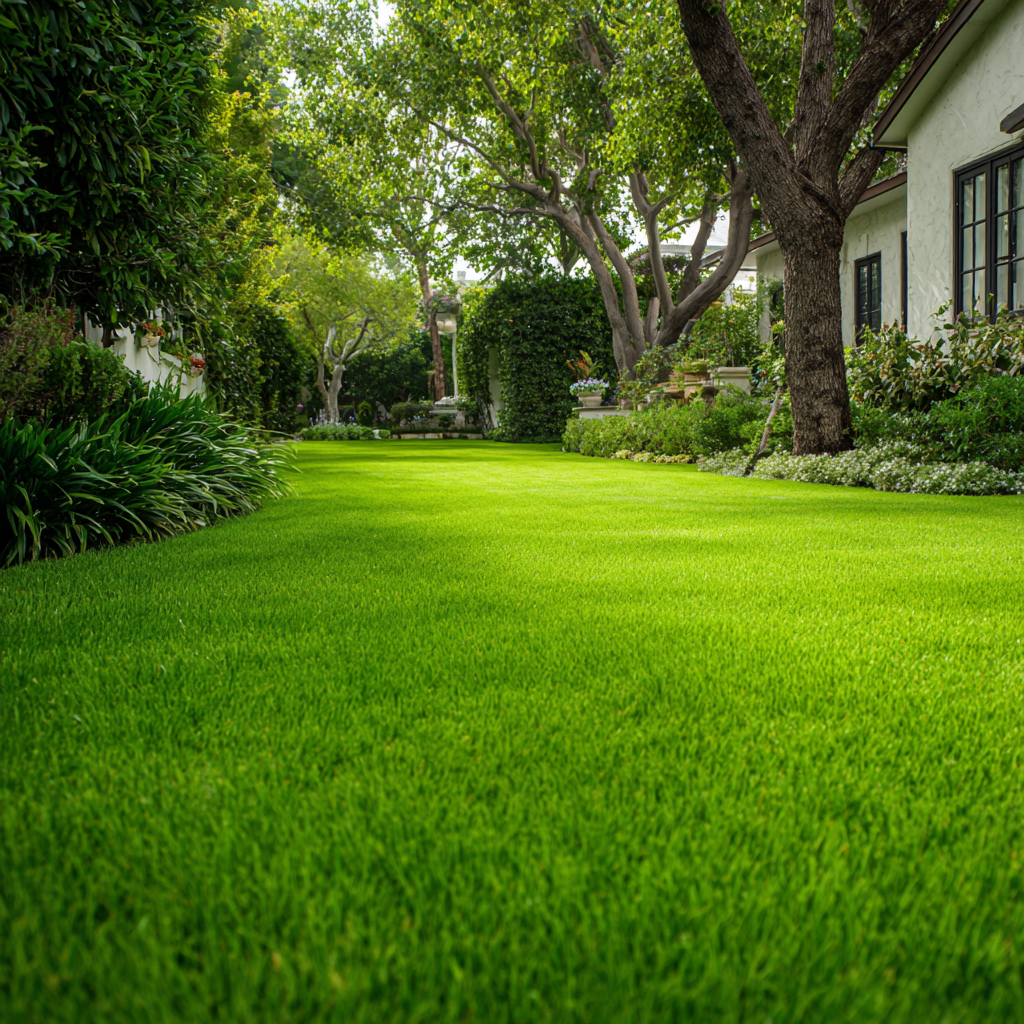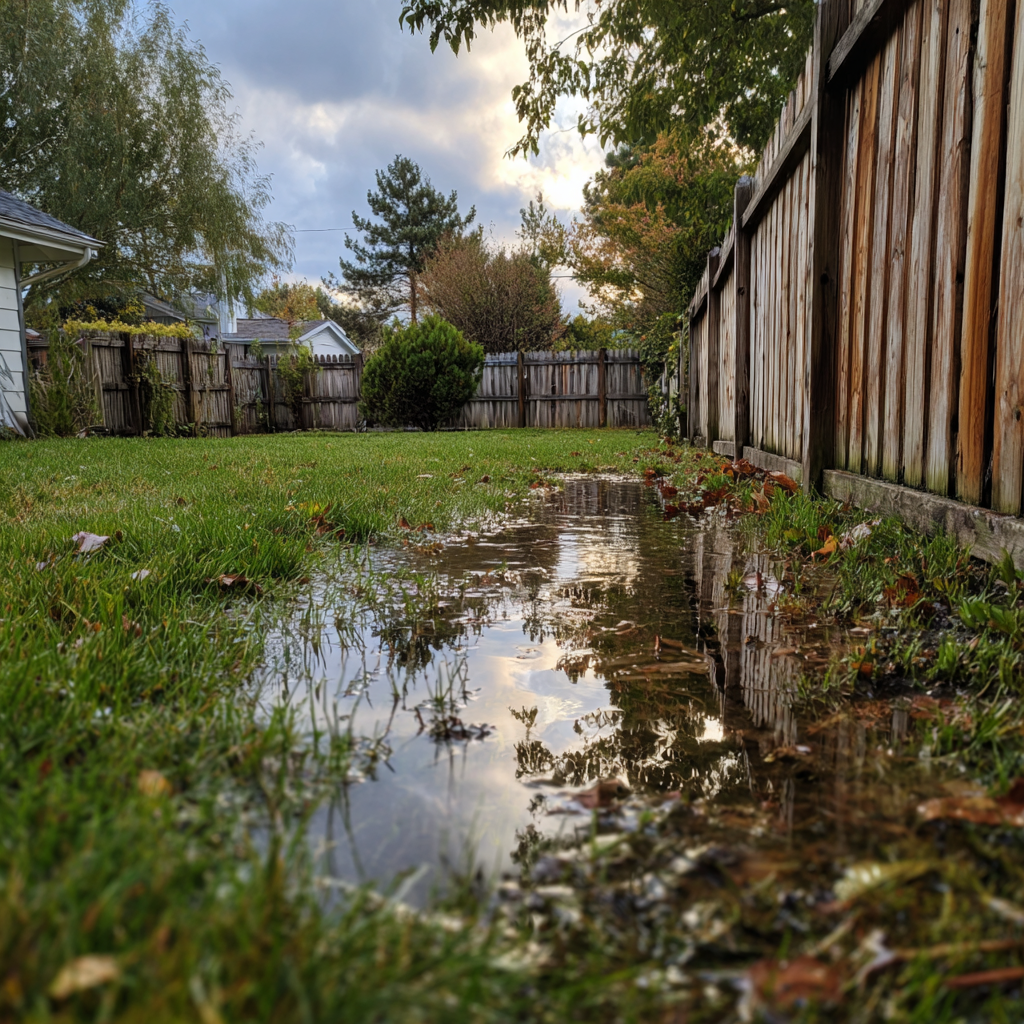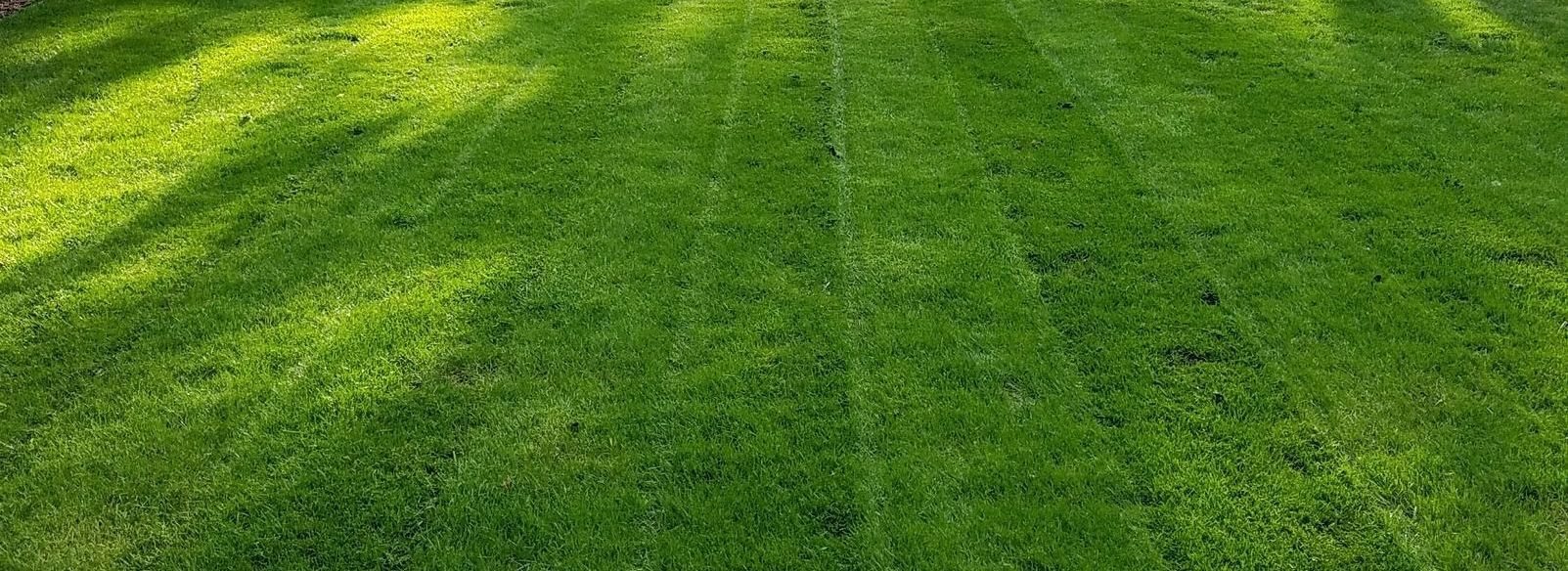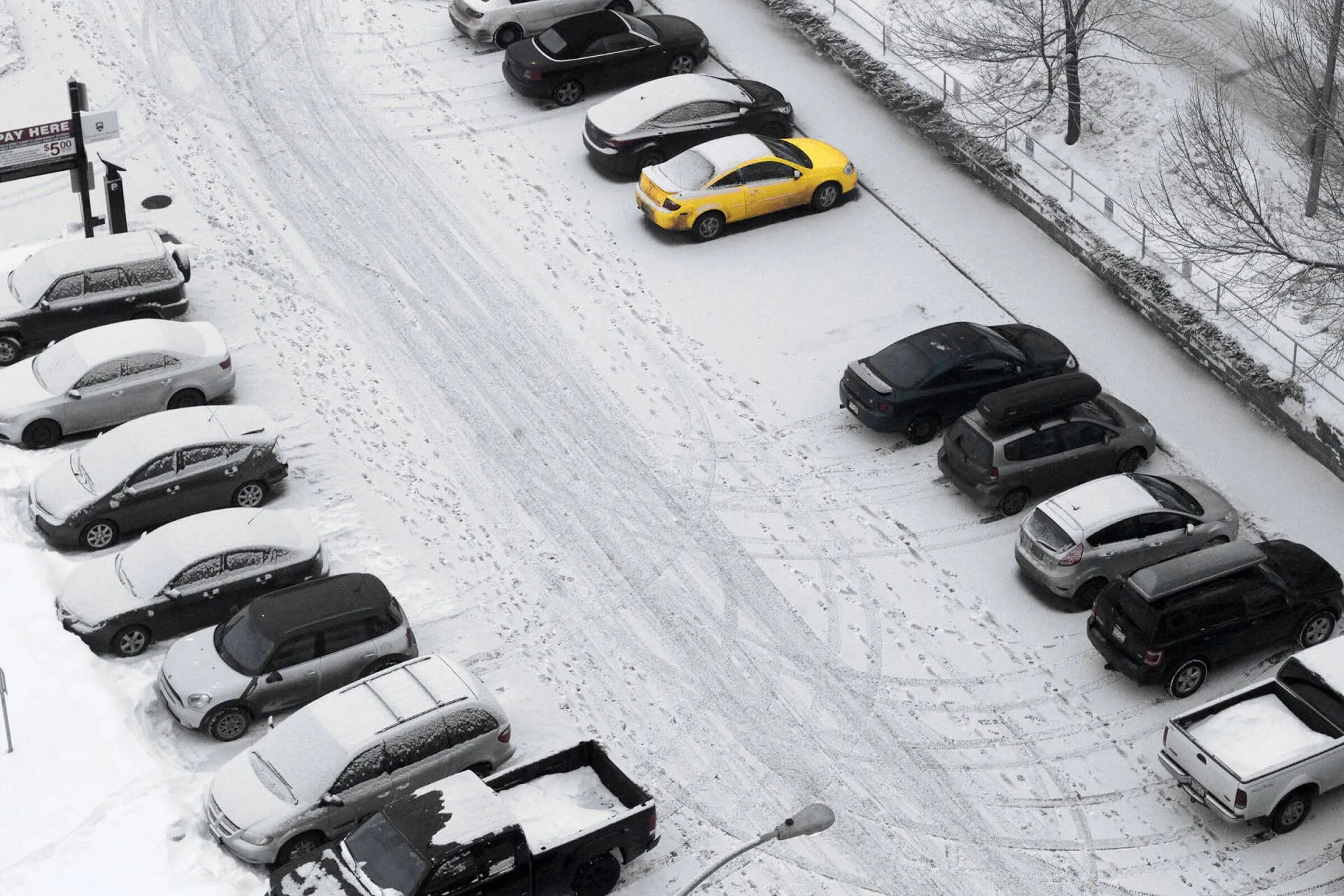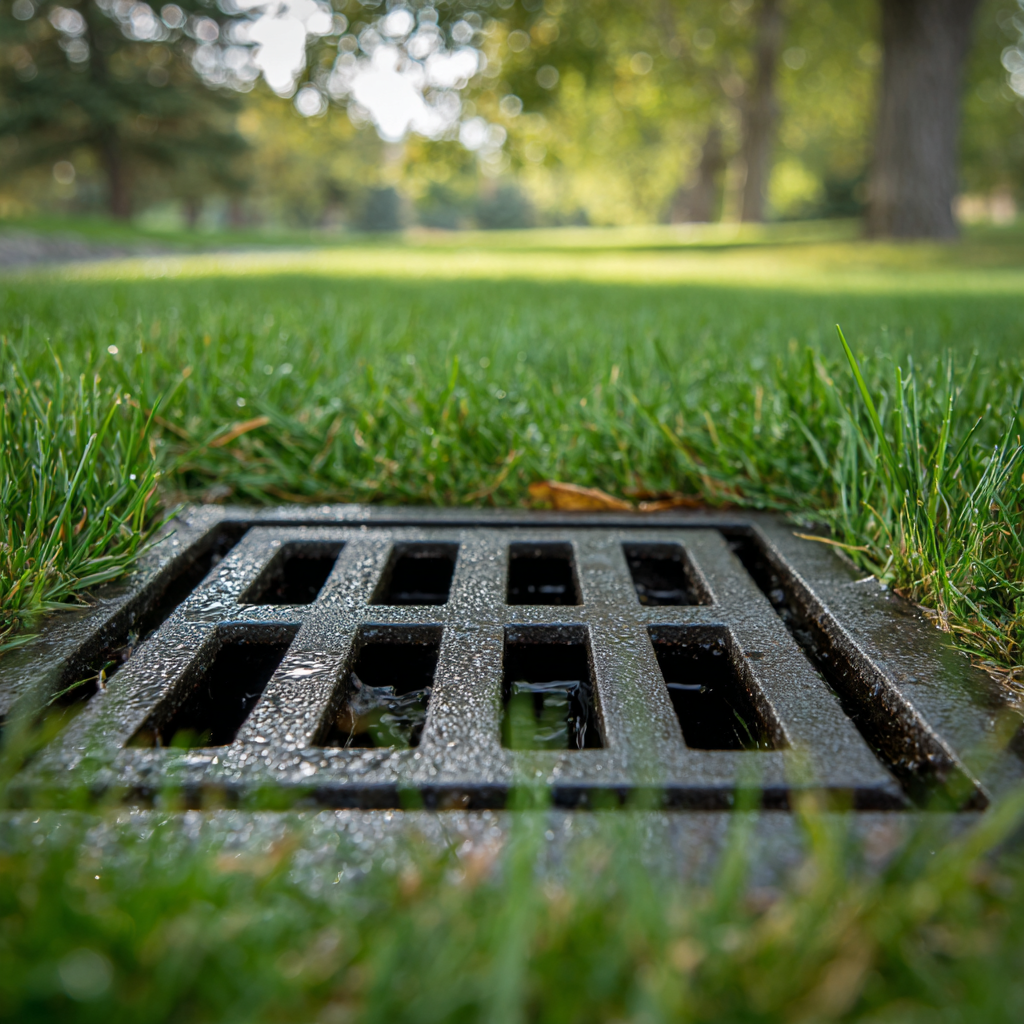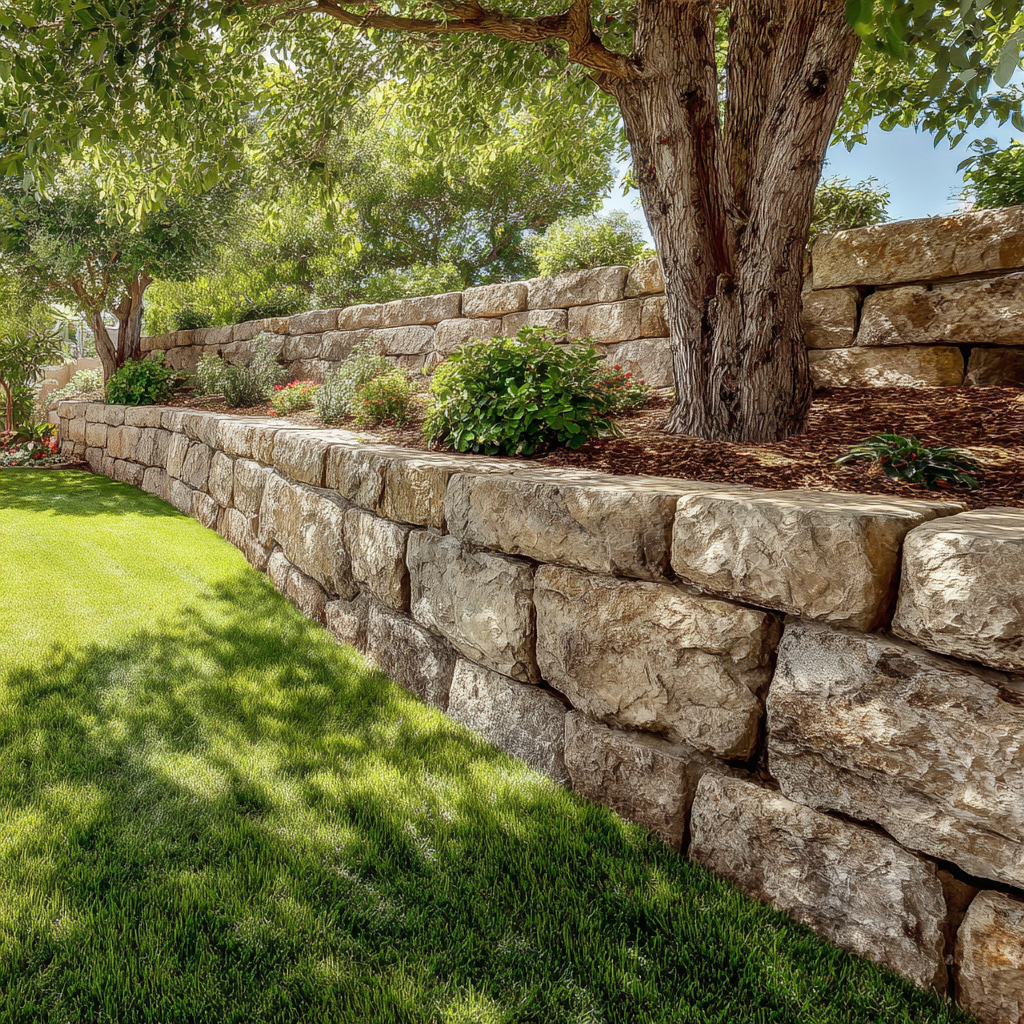How Snow Removal Companies Protect Your Golden Valley Landscape
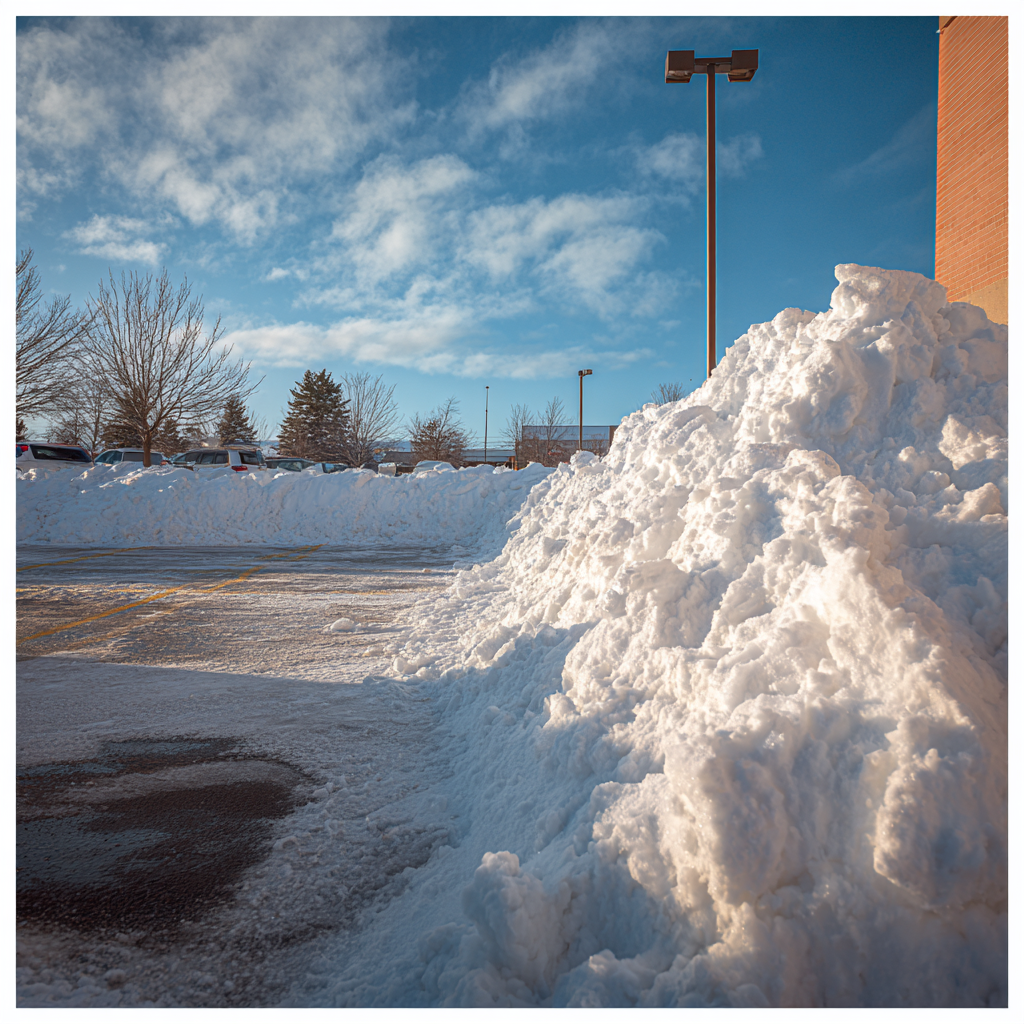
Snow Removal Companies Protect Your Golden Valley Landscape
You need snow removal for the upcoming winter, but you're concerned about damage to your landscape. You have nice landscaping, mature shrubs, retaining walls, a well-maintained lawn. You've heard horror stories from neighbors or experienced damage yourself - plow blades tearing up lawn edges, evergreens buried under massive snow piles, damaged walls from careless plowing.
Spring arrives and you discover the damage snow removal caused all winter. Dead plants, torn-up grass, broken structures. Based on what we've seen throughout Golden Valley, landscape damage from snow removal is completely avoidable with proper approach. The difference between companies is planning and care, not just getting snow out of the way.
Why Landscape Damage Happens (And Why It's Avoidable)
Common causes of damage include wrong equipment for the situation, no planning about where snow can safely be piled, no property boundaries marked under snow, crews that don't know your property, rushing without attention to detail, and companies that don't care about anything beyond clearing snow quickly.
The financial impact is significant. Replacing damaged evergreens costs $100-500 each or more for mature specimens. Repairing torn-up lawn areas runs $500-2000. Fixing damaged retaining walls or fences costs $500-5000 or more. Damage accumulates over the entire winter. One careless season can undo years of landscaping investment you've made in your property.
The good news is this is completely avoidable. Proper planning eliminates most damage through right equipment selection, clear mapping and communication to crews, boundary staking so crews know where they can plow, trained crews who understand landscape protection, and companies that value long-term customer relationships over quick efficiency.
Equipment Selection: Using the Right Tool for Each Situation
Plows work well in open driveways with adequate width of 12 feet or more, areas without tight spaces or obstacles close by, and properties with room to maneuver equipment. Standard residential driveways without complications are perfect for plow service.
Plows create risk in narrow driveways less than 10-12 feet wide, close to retaining walls where the blade could strike the structure, near fences where pushed snow causes damage, tight spaces with landscaping features on both sides, and areas with features buried under snow that aren't visible to the driver.
We use snow blowers instead in tight spaces where plows can't maneuver safely, close to retaining walls within a few feet where contact is likely, narrow driveways under 10-12 feet wide, near fences where pushing snow would bend or break panels, and areas with delicate landscaping requiring careful clearing.
Equipment choice matters because snow blowers throw snow away from the area rather than pushing it forward like plows do. This allows precise control in confined spaces and eliminates contact with walls, fences, and landscaping. Snow blowing takes more time than plowing but saves the expense of repairing damage.
When evaluating companies, ask: Do you use snow blowers for tight spaces? How do you determine when to use plow versus blower? What equipment do you have available? Do drivers have both options on their trucks?
Property Mapping: Planning Where Snow Can Go
Mapping matters because not all areas of your property can safely receive piled snow. Some plants tolerate burial, others don't and will die. Structures can be damaged by heavy piles against them. Planning where snow goes eliminates problems before they occur rather than discovering issues in spring.
What gets documented includes location of all evergreens and valuable shrubs you want protected, retaining wall locations and heights, fence lines and sensitive areas near them, perennial beds versus lawn areas, obstacles that will be buried under snow, and your specific concerns and priorities for landscape protection.
Snow can be piled safely over perennials that die back completely each season, on lawn areas that regrow from roots in spring, away from structures and delicate plants, in areas you designate as acceptable, and spots where snow naturally melts and drains without causing problems.
Snow should never be piled on evergreens that keep their growth year-round, on shrubs that won't recover from weight and pressure, against fences where weight and moisture cause structural damage, against retaining walls where pressure can crack or shift blocks, over buried landscape features that could be damaged, or excessively near building foundations.
This planning eliminates specific damage scenarios. Evergreens buried under heavy piles have branches break and often die completely. Shrubs crushed by weight don't recover in spring. Fences pushed by heavy accumulation bend or break. Retaining walls can crack from sustained pressure throughout winter. All avoidable with proper planning about snow placement.
How We Create Property Maps for Snow Removal
Our mapping process starts with walking your property before winter with you present. We document all landscape features and your specific concerns. We photograph the property from multiple angles showing current conditions. We identify safe versus unsafe areas for snow placement. We create clear maps with detailed notes. Then we provide this information to crews through tablets showing maps, photos, and instructions during service.
Crews access these maps through tablets in their trucks displaying property layouts and photos. Notes appear on screen during service so drivers see important information. Drivers know exactly where snow can be placed safely. New drivers can service your property correctly even on first visit. This creates consistency regardless of who's plowing on any given day.
This matters because it eliminates "we didn't know that was there" excuses. It removes guessing by crews about where they can put snow. It protects your landscape investment through documented planning. It creates accountability and consistency. This is a systematic approach versus just showing up and winging it each storm.
Staking: Marking Boundaries Before Snow Covers Everything
Staking involves placing reflective markers along driveway edges to mark boundaries so crews can see edges when snow covers everything. This eliminates plowing over lawn or into landscape areas. Markers are installed before first snow covers your property.
Boundaries disappear under snow because everything looks the same when covered in white. You can't see where driveway ends and lawn begins. Landscape features are completely buried and invisible. Curbs and edges disappear. Drivers operate based entirely on what they can see, which is very limited under snow cover.
Without staking, plow blades run over lawn edges repeatedly, tearing up grass that needs expensive repair in spring. Plows hit buried retaining walls causing structural harm. They damage shrubs and evergreens that aren't visible under snow. Each storm accumulates more damage throughout winter.
Staking stops this by providing clear visual markers showing exact boundaries. Crews know where they can and can't operate the plow. It protects lawn edges from blade damage and prevents hitting buried features. Staking works even in heavy accumulation and darkness during early morning plowing.
Quality staking uses markers every 10-15 feet along edges, tall enough to stay visible through heavy snow, reflective material for visibility at night and early morning, placed before season starts, and checked and replaced if damaged during winter storms.
The Difference Between Careful and Careless Service
Careless snow removal focuses on getting snow out of the way as fast as possible. No thought about where it goes or what it might damage. Using only plow regardless of situation or space constraints. No property knowledge or planning before arriving. Different driver every time who doesn't know your property. Damage is considered "just part of snow removal" rather than avoidable.
Careful service uses a planned approach for each property. Right equipment selected for each situation and area. Clear knowledge of where snow can be placed safely. Protecting landscape is priority alongside clearing snow effectively. Same driver learning your property better all season. Damage is considered unacceptable.
The financial calculation reveals the truth. Careless service seems attractive with cheaper upfront pricing. But spring reveals expensive problems. The total repair costs often exceed the entire season's snow removal fee, making the "cheap" service actually very expensive.
Value comes from slightly higher upfront pricing but no spring surprises. Your landscape stays intact and healthy. Long-term protection of your property investment. Peace of mind throughout winter knowing your landscape is being protected, not harmed.
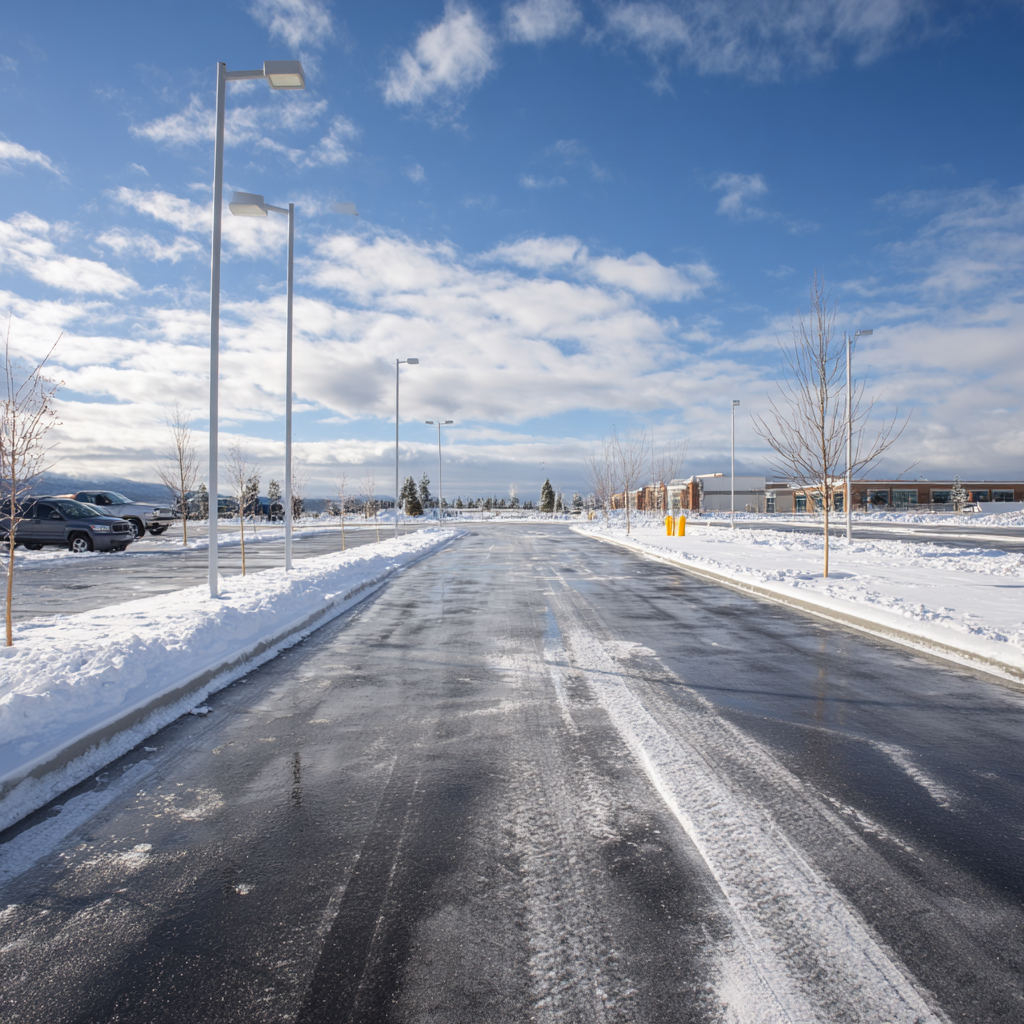
What Happens to Different Plants Under Snow Piles
Plants that tolerate burial include perennials that die back completely in fall, hostas and daylilies and most perennial flowers, lawn grass that regrows from roots in spring, and deciduous shrubs without leaves in winter. These can have snow piled on them safely without causing permanent harm.
Plants damaged by burial include evergreens like pines, spruces, junipers, and arborvitae, broad-leaf evergreens like rhododendrons and boxwoods, shrubs that keep their structure year-round, and young trees that can't handle the weight. These must not have snow piled on them.
Evergreens are especially vulnerable because they keep foliage all winter. Heavy snow breaks branches that are bearing needles. Broken branches don't regrow on evergreens - the harm is permanent and highly visible. Severe damage can kill the entire plant, and replacing mature specimens is expensive.
Companies with landscape knowledge understand which plants tolerate snow and which don't. We avoid piling on vulnerable specimens. We ask homeowners about plant priorities during property walks. Our maps show which areas are safe for placement. This expertise eliminates the damage that careless companies cause regularly.
Structures: Fences, Walls, and Buildings
Fence damage from snow piles happens when heavy accumulation is pushed directly against structures. The weight bends or breaks panels. Moisture causes wooden fences to rot faster. Metal fences bend under sustained pressure. Problems worsen throughout winter as more snow gets added to existing piles.
Retaining wall damage occurs when snow is pushed directly against walls creating pressure. Freeze-thaw cycles with trapped moisture worsen the situation. Pressure can crack or shift wall blocks or stones. Repairs are expensive, potentially reaching thousands of dollars depending on wall size and severity. This is structural harm from careless plowing that could have been avoided.
We protect structures by never pushing snow directly into fences or walls. We use snow blowers near these features instead of plows. We pile snow away from structures with buffer zones. We leave appropriate space between piles and structures. Understanding that avoiding contact eliminates problems - it's that simple.
Building foundation considerations are important too. Some snow near your foundation is normal and acceptable. Excessive piling against the house causes problems including ice dams and potential moisture issues in basements. Quality service balances effective clearing with appropriate pile placement.
What to Look For When Hiring Snow Removal
Pre-season preparation indicators reveal professionalism. Company wants to walk your property before winter starts. They ask about landscape features and your specific concerns. They discuss staking and boundary marking. They create documentation and maps of your property. They plan their approach rather than just showing up when it snows.
Equipment capabilities matter for landscape protection. Company has both plows and snow blowers available. They discuss which equipment makes sense for your property specifically. They explain when they use different equipment types. Their gear is appropriate for residential work, not just huge commercial plows that can't maneuver in tight residential spaces.
Crew training and consistency affect service quality. Same driver is assigned to your property all season. Crews receive training on landscape protection. They have your property information available during service. There's a communication system for special concerns or changes.
Insurance and accountability provide protection. Company carries proper coverage for property damage. They're willing to discuss prevention approaches. They have clear processes for handling any issues that occur. They take responsibility seriously rather than dismissing concerns.
Red Flags Indicating Damage Risk
No pre-season preparation means they don't visit your property before winter, don't stake boundaries, don't create maps or documentation, and just show up and plow when it snows without any planning.
Only uses plows for everything regardless of situation. They have no snow blowers available. They use plow in all situations regardless of space constraints. They don't discuss equipment selection. Their approach is one-size-fits-all without consideration for your property's specific needs.
No property knowledge system means different driver every time who doesn't know your property. They have no information about your specific property documented. Drivers don't know where snow can be placed safely. They have "we'll figure it out" attitude rather than planned approach.
Doesn't discuss landscape protection during initial conversations. They never mention harm prevention. They're focused only on clearing snow quickly. They dismiss concerns about plants or structures. They have "damage happens" attitude rather than prevention mindset.
Very low pricing compared to competitors signals problems. They're significantly cheaper than other companies. They're likely cutting corners somewhere to offer low prices. They may not have proper insurance coverage. They're rushing through properties without care to maintain low pricing.
Golden Valley Specific Considerations
Mature landscaping is common throughout Golden Valley's established neighborhoods. Many properties have significant investment built up over years. Properties feature mature evergreens and valuable shrubs worth protecting. Homeowners care deeply about preserving their landscape work.
Property characteristics affect approach. Many Golden Valley homes have narrow driveways requiring careful equipment selection and maneuvering. Retaining walls are common on sloped properties.
Established perennial gardens exist throughout neighborhoods. Fences and structures are often close to driveways, requiring attention to avoid contact.
Winter conditions in Golden Valley require good planning. Heavy snow years require strategic pile planning. Many properties have limited space for accumulation. A systematic approach to placement is essential. Planning makes the difference between a successful season and problems.
Spring: When Damage Becomes Visible
What homeowners discover in spring includes dead or damaged evergreens that won't recover, torn-up lawn edges needing repair or replacement, broken fence panels requiring fixing, damaged retaining walls needing structural repair, and crushed perennials that should have been avoided with proper mapping.
The cost of discovering problems is frustrating because it's too late to address the root cause. The snow removal company may not take responsibility or may be impossible to contact. You need expensive repairs and replacements. You feel regret about choosing the wrong company based on price alone.
This is why choosing carefully before winter starts matters. You can't undo winter harm once spring arrives. It's worth paying moderately more for landscape protection upfront. Quality service eliminates spring disappointment and expensive repairs.
The Investment in Quality Service
Basic snow removal costs $400-600 per season. Service with comprehensive landscape protection costs $500-700 per season. The difference is only $100-150 for the entire winter. Compare that to the expense of spring repairs which often exceed $1000-5000 when careless plowing causes harm all winter.
The calculation is straightforward. Slightly higher pricing protects significant landscape investment. Avoiding problems costs far less than repairing them. You get peace of mind throughout winter. There are no spring surprises requiring expensive fixes. Quality service literally pays for itself by eliminating harm that would cost more than the price difference.
Protect Your Landscape Investment
Your Golden Valley landscape represents years of investment and growth. Mature evergreens, carefully planned perennial beds, retaining walls, nice lawn - all vulnerable to careless snow removal that doesn't plan or care about protection.
Quality snow removal companies protect your landscape through proper equipment selection for each situation, clear property mapping showing where snow can and cannot be placed, boundary staking so crews know exactly where they can operate, and trained crews who care about more than just clearing snow quickly.
The difference between companies is planning and attention to detail, not just ability to push snow around. Moderately higher pricing for quality service eliminates expensive harm. Spring shouldn't bring discovery of dead plants and damaged structures from careless plowing all winter. Choose carefully before winter starts based on landscape protection approach, not just lowest price quote.
Need snow removal that protects your Golden Valley landscape? Contact KG Landscape to discuss our approach to harm prevention. We'll walk your property, create a protection plan, and provide service that keeps your landscape safe all winter.
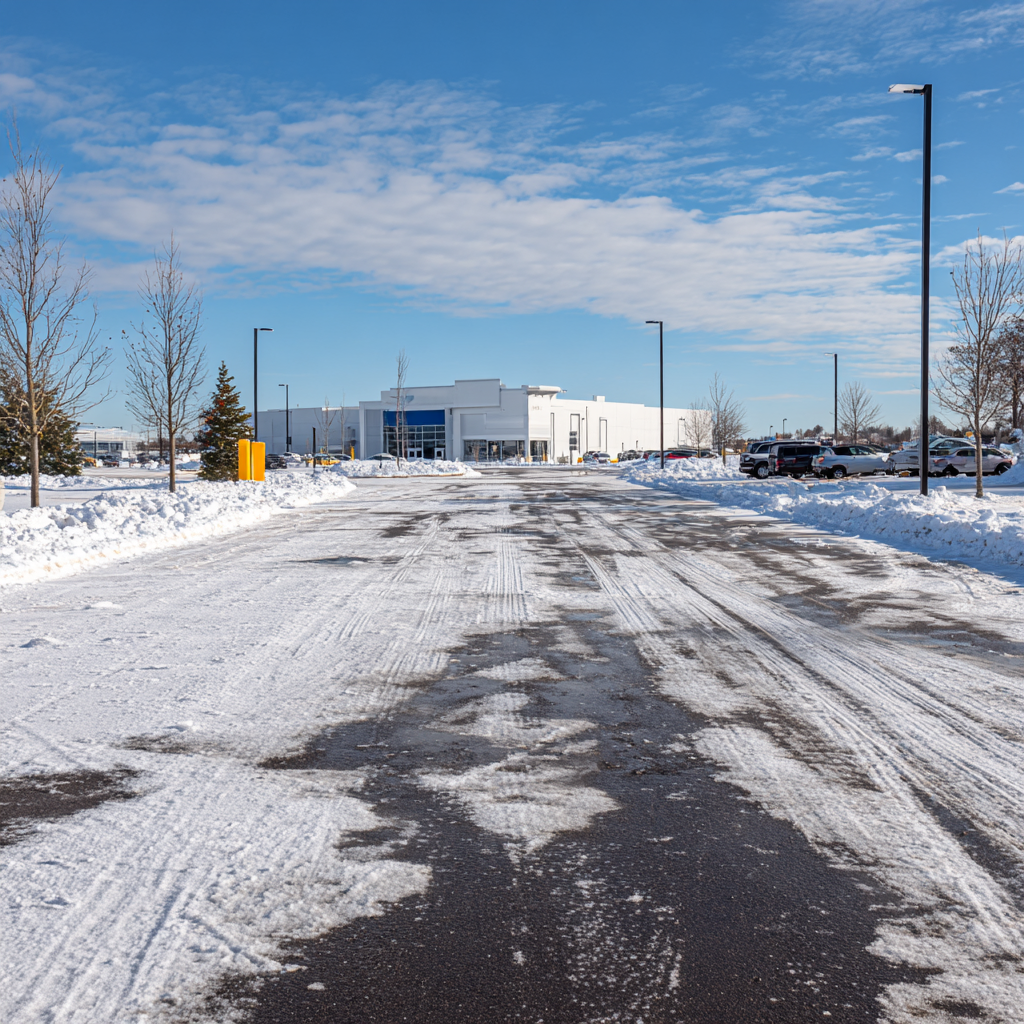
Frequently Asked Questions
How do snow removal companies prevent damage to evergreens and shrubs?
Quality companies stop damage through property mapping before winter identifying which plants are evergreens that must be protected, using equipment appropriate for spaces near plants (snow blowers instead of plows when close), creating clear instructions for crews about where snow cannot be placed, and assigning same driver who learns your property. Evergreens buried under heavy piles have branches break and often die because they keep foliage year-round unlike perennials that regrow. Knowledgeable companies understand the difference and pile snow only on areas that tolerate it like lawn and perennial beds.
Why is staking important for preventing landscape damage?
Staking marks driveway boundaries with visible markers before snow covers everything. Under snow cover, crews cannot see where driveway ends and lawn begins, where retaining walls are located, or where shrubs and landscape features exist. Without staking, plow blades repeatedly run over lawn edges tearing up grass, hit buried retaining walls causing structural harm, and damage buried shrubs and evergreens. Reflective stakes stay visible through heavy accumulation and at night, showing crews exactly where they can safely operate equipment. This simple step eliminates most common landscape harm from plowing.
Should I be concerned about snow piled against my retaining wall?
Yes, snow piled directly against retaining walls creates pressure that can crack or shift the wall structure. Freeze-thaw cycles with moisture trapped against wall worsen problems. Wall repairs are expensive, potentially reaching thousands of dollars depending on severity and wall size. Quality companies never push snow directly into retaining walls. We use snow blowers near walls instead of plows, pile snow away from walls with buffer space, and include wall locations on property maps so all crews know to protect them. Snow should be kept away from walls, not piled against them throughout winter.
What's the difference between using a plow vs. snow blower?
Plows push snow forward and work efficiently in open spaces but create risk in tight areas near structures, fences, walls, and landscaping. Snow blowers throw snow away from the area and allow precise control but take more time. We use plows for open driveways with adequate space and snow blowers for narrow driveways under 10-12 feet wide, close to retaining walls and fences, tight spaces with landscaping on both sides, and areas where pushing snow would cause harm. Right equipment selection for each situation eliminates problems while clearing snow effectively.
What should I ask snow removal companies about landscape protection?
Ask if they walk properties before winter to plan approach, whether they create property maps showing safe snow pile areas, how they avoid harm to evergreens and structures, if they stake property boundaries, what equipment they use in tight spaces near landscaping, whether same driver services your property all season, what insurance they carry covering property issues, and how they handle any problems that occur. Companies focused on landscape protection discuss these topics willingly. Companies that dismiss protection concerns or focus only on price typically cause harm that costs more than hiring quality service.
